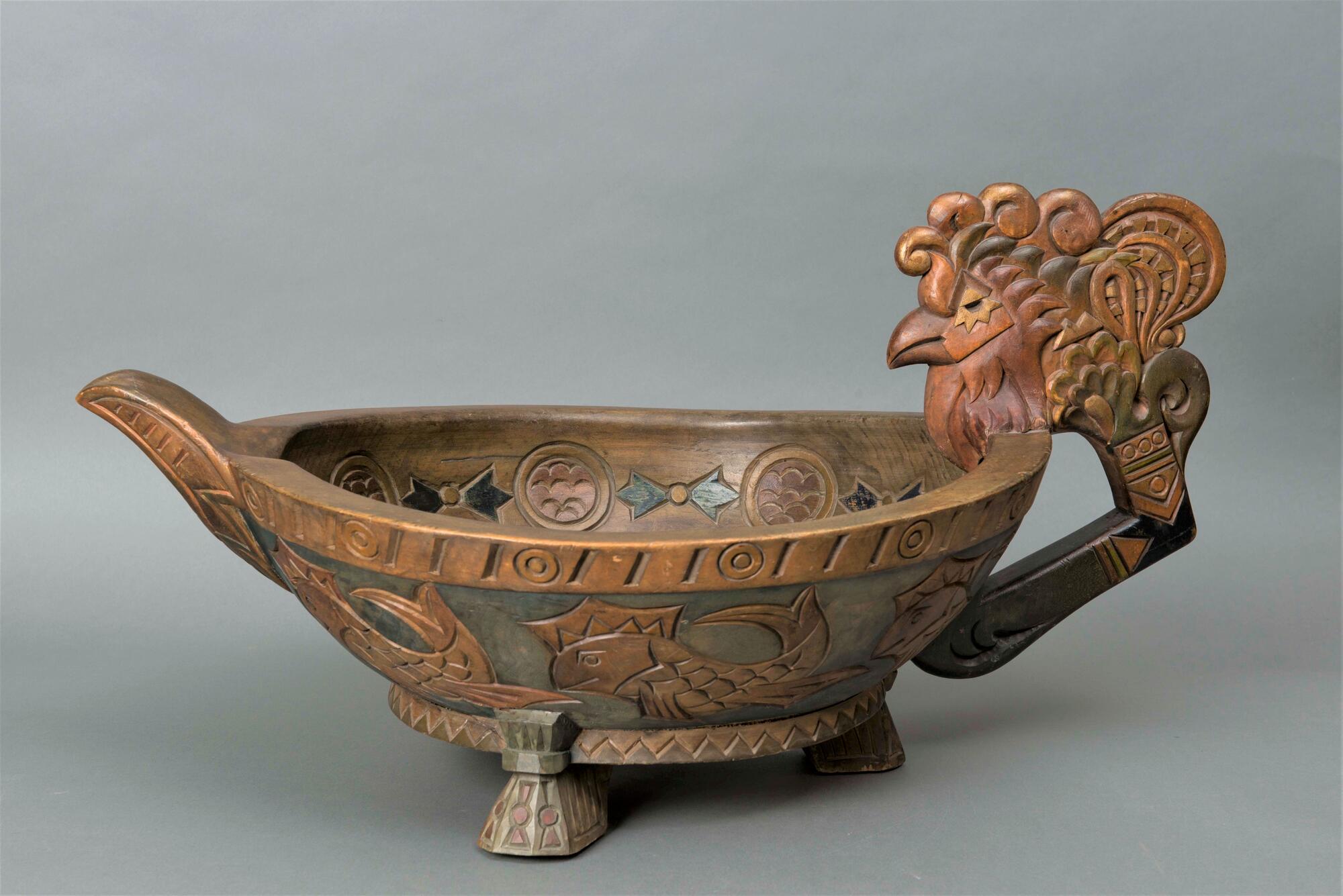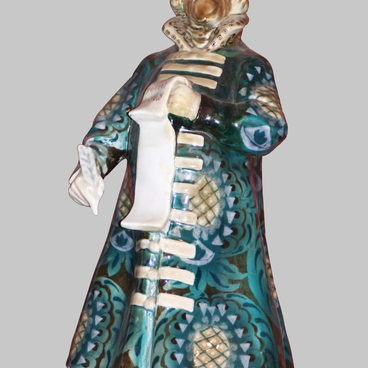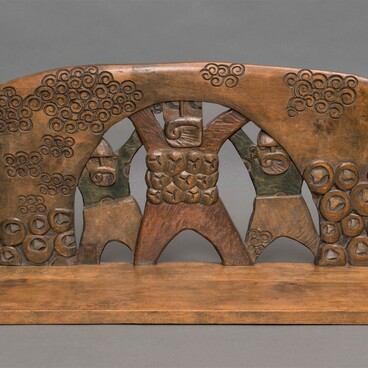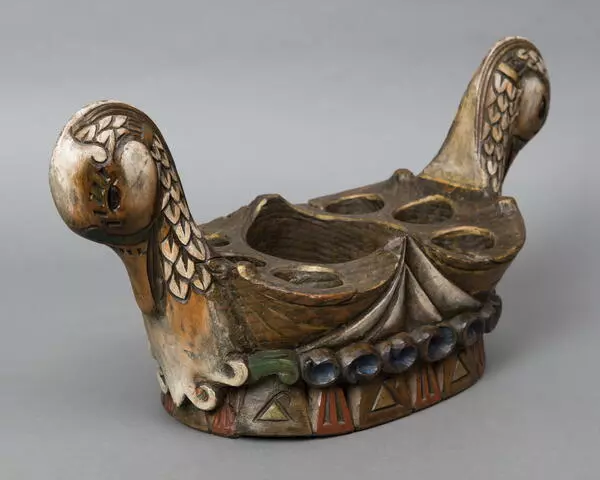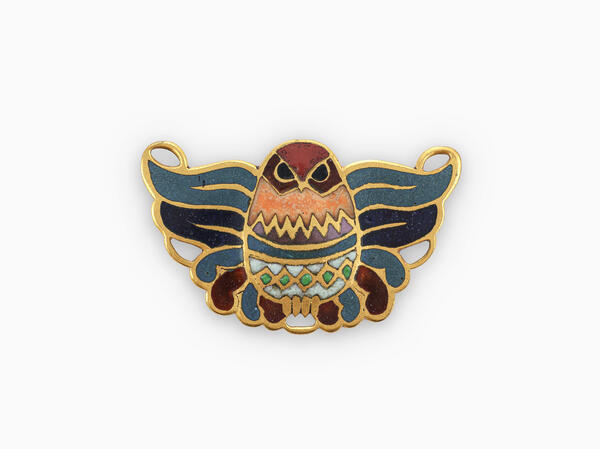In the third showroom of the exposition are presented carved products from Talashkino, Smolensk province. The estate of Princess Maria Tenisheva near Smolensk was the second major center of artistic life of the early 20th century. At the turn of the 19th and 20th centuries, the famous patron of art, collector and artist Maria Tenisheva created an art center in Talashkino, which gained European fame.
Talashkino’s creative atmosphere attracted many prominent figures of Russian culture. Painters Mikhail Vrubel, Nicholas Roerich, Alexander Benois, Mikhail Nesterov, Konstantin Korovin, Ilya Repin and others have visited and worked here. The history of Talashkino began in 1887 with the creation of an agricultural school for peasant children. The school paid much attention to artistic education, and each student mandatory studied one of the crafts. Handicraft workshops, originally created for students, soon went beyond the curriculum and turned into artistic and industrial. In addition to students and graduates of the school, craftsmen from local artisans worked here. With the recommendation of Mikhail Vrubel, the artist Sergei Malyutin, who had worked in Talashkino for more than three years, was invited to manage the workshops in 1900.
After Sergei Malyutin left, the Talashkino workshops were headed by the artist Alexander Zinoviev.
The main type of artwork was wood carving. Sun and stars, mermaids and lions — all these images were willingly transferred to the decor of carved furniture, boxes, ladles and photo frames. They formed a new style of home interiors and set the fashion for “Russian” in the world. The items presented in this showroom demonstrate the entire range of carvings produced in Talashkino. These are boxes, chests, frames, ladles and much more.
In front of us is a flagon ladle, made according to the drawing of Maria Tenisheva. A flagon was a low and wide copper or wooden ware that was used to serve alcoholic beverages (beer, home brew or wine) to the festive table. They were poured into cups or glasses from the flagon.
Talashkino’s creative atmosphere attracted many prominent figures of Russian culture. Painters Mikhail Vrubel, Nicholas Roerich, Alexander Benois, Mikhail Nesterov, Konstantin Korovin, Ilya Repin and others have visited and worked here. The history of Talashkino began in 1887 with the creation of an agricultural school for peasant children. The school paid much attention to artistic education, and each student mandatory studied one of the crafts. Handicraft workshops, originally created for students, soon went beyond the curriculum and turned into artistic and industrial. In addition to students and graduates of the school, craftsmen from local artisans worked here. With the recommendation of Mikhail Vrubel, the artist Sergei Malyutin, who had worked in Talashkino for more than three years, was invited to manage the workshops in 1900.
After Sergei Malyutin left, the Talashkino workshops were headed by the artist Alexander Zinoviev.
The main type of artwork was wood carving. Sun and stars, mermaids and lions — all these images were willingly transferred to the decor of carved furniture, boxes, ladles and photo frames. They formed a new style of home interiors and set the fashion for “Russian” in the world. The items presented in this showroom demonstrate the entire range of carvings produced in Talashkino. These are boxes, chests, frames, ladles and much more.
Among the works stored in the museum there are items that were replicated in small batches, as well as unique works that do not have copies. Some of them have monograms and signatures.
In front of us is a flagon ladle, made according to the drawing of Maria Tenisheva. A flagon was a low and wide copper or wooden ware that was used to serve alcoholic beverages (beer, home brew or wine) to the festive table. They were poured into cups or glasses from the flagon.
